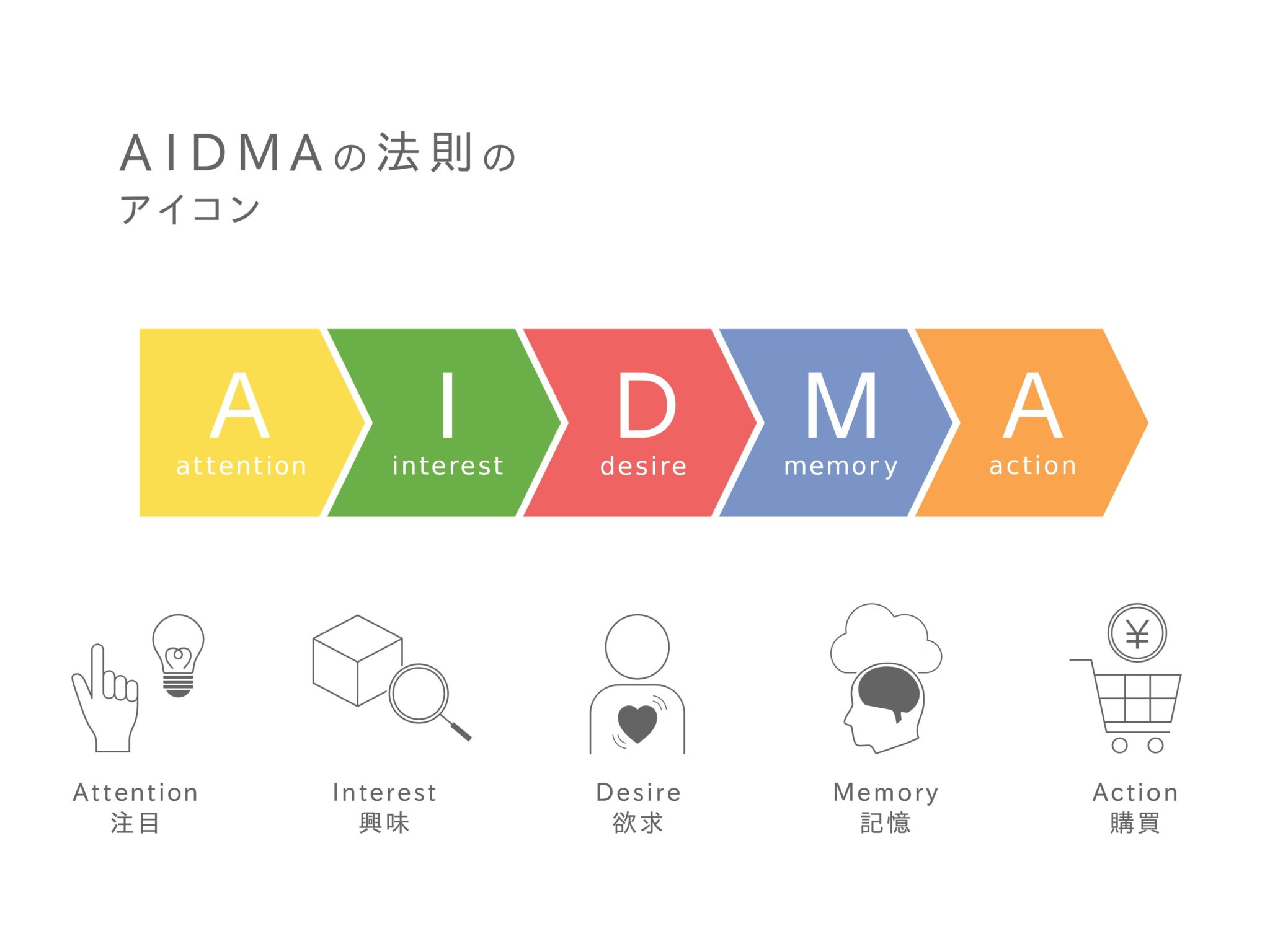When conducting marketing, it is important to have a firm grasp of customer psychology.
If you conduct marketing without understanding customer psychology and behavioral processes, you will not be able to highlight the features of your products and services at the appropriate time, and your marketing will not be as effective.
This time, I would like to introduce the “AIDMA Law”, which describes the customer behavior process and can be applied to BtoB.
What is the “AIDMA Law”?

AIDMA
is an abbreviation that stands for Attention, Interest, Desire, Memory, and Action. AIDMA is an abbreviation that stands for Attention, Interest, Desire, Memory, and Action, meaning that customers purchase a product or service after becoming aware of it. It represents the behavioral process up to.
For example, when we are about to buy a product, if it is a cheap item we may make an “impulse purchase,” but normally we should have made “some kind of judgment” before making the purchase.
You must be thinking about various things before buying, such as “Do I really need this product?”, “Isn’t the price expensive compared to other products?”, “Do I have the budget to begin with?” is.
The origin of the AIDMA law is that these various thoughts do not come to mind randomly, but are considered in sequence during the behavioral process leading up to purchase.

The AIDMA law was published in 1924 in his book “Retail Advertising and Selling” by Samuel Roland Hall, who wrote a practical book on sales and advertising in the United States.
At that time, America was in an era of mass production and mass consumption. Understanding customer psychology and delivering information at the right time was the secret to winning over competition with other companies and achieving business success.

What does AIDMA stand for?
A→I→D→M→A represents customer psychology in chronological order up to purchase.
Let’s also introduce what kind of marketing you should do at each stage.
In order to solve the question “Do I really need this product?”, we need to understand what characteristics the product has and how those characteristics can satisfy the customer’s needs (or solve their problems). I will emphasize that.
What we often see is questions to customers such as “Are you worried about ***?”
There are several hurdles in the psychology of customers that prevent them from purchasing a product even if they are interested in it.
For example, is this product the best choice for your company? That’s a question.
If the product is one-of-a-kind, there is no such hesitation, but there are usually quite a few competing products.
In this case, prepare a comparison table with other companies’ products and emphasize (differentiate) the unique features of your product that are not found in other companies’ products.
Price may also be a hurdle to purchase.
For example, the question is, “Isn’t the price high compared to other products?”
An effective way to do this is to provide explanations using comparison tables, as well as campaign information.
It may be helpful to think of the “**** yen off for 30 minutes after the program ends” that is often offered on TV shopping etc.

If your customer is a business, you will need to submit a quote for budgeting and work out payment terms.

In this way, AIDMA classifies customer purchasing behavior chronologically based on psychological changes, but how can this be useful for business?
I have written about what kind of marketing should be done to customers at each stage, but the most important thing is to know at what stage customers are leaving.
That stage when a customer leaves may be the weakest part of your marketing.
AIDMA has been often used for marketing for a long time, but now AISAS, which was proposed by advertising agency Dentsu in 2005, is increasingly being used.
AISAS is a method that corresponds to the Internet age and categorizes the purchase process into Attention, Interest, Search, Action, and Share, and conducts marketing tailored to each. .

summary

◆AIDMA is a chronological representation of the customer’s psychology and behavioral process leading up to purchase.

◆AIDMA originally represents the consumer purchasing process, but it can also be applied to BtoB.

◆The most important thing is to know at what stage of AIDMA customers left the company.
◆In recent years, marketing using AISAS proposed by Dentsu has increased.



